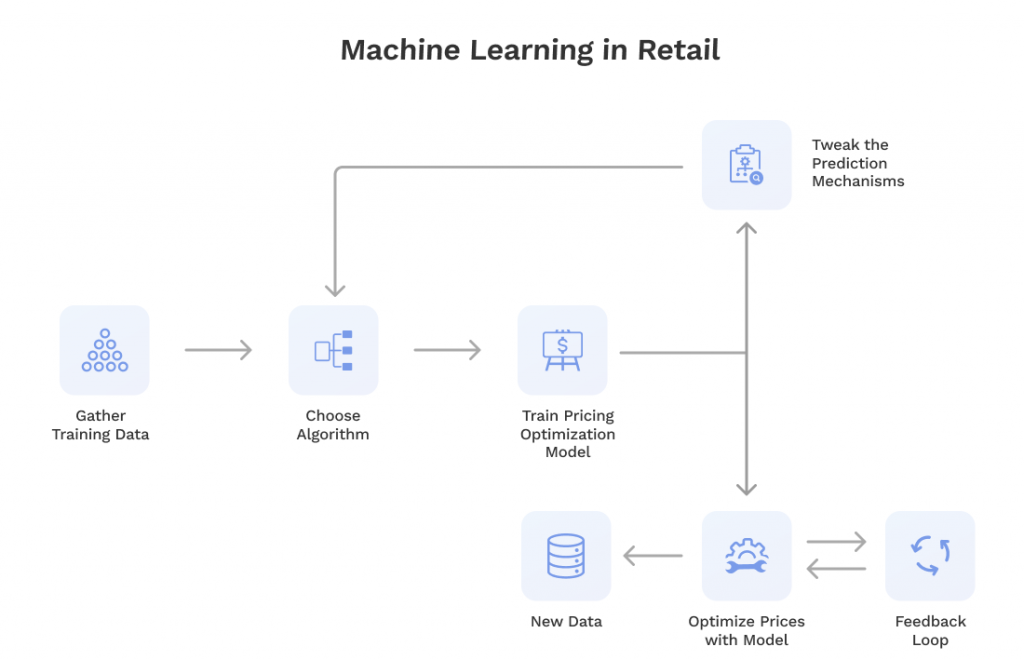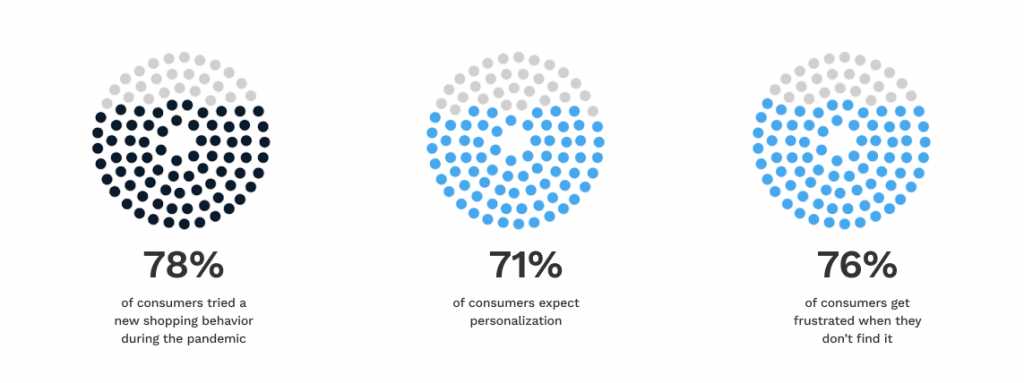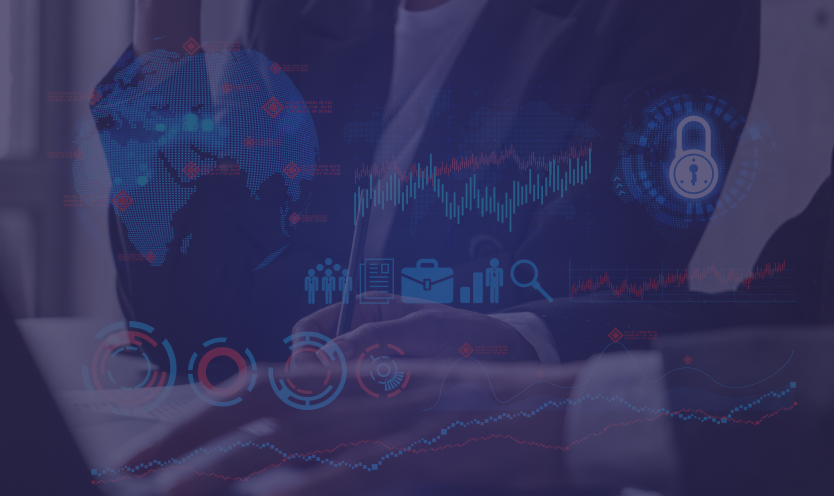How AI Platforms Help Retailers Predict Prices
How AI Platforms Help Retailers Predict Prices
The integration of artificial intelligence (AI) into business operations has been revolutionary. In today’s business landscape, AI is evolving rapidly from a means for a slight competitive edge to a vital component for survival. Notably, predictive AI pricing will soon be a crucial prerequisite.
With 60% of major retailers worldwide already using AI systems in their daily operations, AI technology has established itself as a game-changing force in the retail and ecommerce industries. As businesses shift into a new era of predictive commerce, decision-makers must focus on leveraging AI’s most critical capabilities and predictive powers to enhance operations, improve customer experience, and ultimately, drive success.
The guide explores how AI platforms can empower retail and ecommerce businesses to adopt predictive commerce practices, particularly in the areas of price prediction and optimization.
Key Takeaways
- AI technologies are transforming retail by enabling predictive pricing, improving customer experiences, and automating key processes for operational efficiency.
- Machine learning (ML), a subset of AI, is essential for harnessing and interpreting vast amounts of data for real-time strategic decision-making and price optimization in retail.
- The adoption of a tech-focused approach that integrates AI into all aspects of retail operations is crucial for future competitiveness and success.

10 Ways AI Transforms Price Prediction and Optimization
Here are the transformative ways AI platforms help retailers and ecommerce businesses predict and set prices for maximum competitiveness and profitability.
1. Predictive Commerce
AI has become indispensable in the retail industry, enabling companies to shift from traditional, reactive business strategies to proactive, predictive commerce. AI harnesses vast amounts of data to:
- Analyze market trends
- Forecast consumer behavior
- Formulate optimal pricing strategies
By enabling businesses to anticipate rather than merely react, AI-powered predictive pricing offers a competitive edge to businesses that implement it effectively.
2. Enhanced Understanding and Operations
Businesses that deploy AI tools in customer service operations experience 3.5 times higher annual improvements in reported customer satisfaction. This showcases AI’s capacity to accurately understand customer needs, behaviors, and preferences. By providing tailored services that resonate with consumers, businesses can elevate the customer experience. At the same time, AI enhances operational efficiency by automating processes, improving decision-making, and optimizing resource allocation, resulting in improved bottom-line performance.
3. Leveraging Machine Learning (ML)

Machine Learning (ML), a critical subset of AI, uses complex algorithms to detect patterns, create predictive models, and adjust actions based on fresh data inputs and anomalies. These abilities make ML the driving force behind predictive analytics in retail. By comprehensively analyzing and interpreting patterns in business data, ML equips retailers with the insights to make strategic decisions in real time.
4. Leveraging ML for Price Prediction
ML algorithms can detect patterns in vastly larger datasets than businesses can process with traditional spreadsheet analysis. Key detectable patterns include factors such as:
- Competitors’ pricing
- Inventory levels
- Purchase histories
- Product preferences
- Market demand
With insights from these fields, ML algorithms enable accurate price prediction. This empowers retailers to set competitive prices and offer value to customers while maintaining profitability and market share.
5. Adapting to Market Fluctuations
Predictive models created by AI platforms can adapt and respond to changing market conditions. Unlike traditional models, which rely only on historical data, these advanced models integrate real-time data, global trends, and emerging market scenarios. With this integrated data, AI commerce platforms can run hundreds to thousands of varied simulations to identify optimal advance strategies and reduce decision-making cycles by a factor of 10-100.
6. Automating Pricing and Data Analysis
AI-driven pricing software can automate the complex process of data analysis and price adjustments. By quickly scraping and processing vast amounts of competitor data, AI platforms can automate the real-time implementation of specific pricing strategies, such as:
- Competitor-based pricing
- Cost plus pricing
- Dynamic pricing
- Elasticity or value-based pricing
This automation of potentially thousands of daily price changes in large retail and ecommerce operations saves significant time and resources, enabling retailers to focus more on strategic initiatives and customer engagement.
7. Personalizing Customer Experience and Increased Sales with Automation
AI transforms the way retailers interact with customers. By analyzing consumer behaviors, AI platforms can enable automated personalization, generating personalized cross-sell and up-sell recommendations and meeting evolving customer expectations.

Recent studies show that 71% of today’s retail and ecommerce consumers expect companies to provide personalized shopping experiences, and 76% consider switching brands when they feel unaccommodated. In this regard, personalization at scale — only possible through AI technologies — not only fosters a deeper connection with customers but also drives customer loyalty, thereby protecting and potentially growing a retailer’s market share.
8. Streamlining Inventory and Assortment Optimization
AI technology simplifies inventory management by automating product reorders when stocks fall below predetermined levels. It also aids in assortment optimization, factoring in variables such as:
- Occasion
- Competitor activities
- Product category
- Seasonal trends
- Consumer behavior
The result is an optimal mix of products that caters to diverse consumer needs while maximizing sales and profits.
9. Accessing Real-Time Market Intelligence
AI tools offer a blend of real-time market insights, human behavior processing, and large-scale automation. By integrating different data points, AI provides a detailed, real-time picture of changing market dynamics. This allows retailers to make timely, informed decisions and stay ahead of competitors.
10. Adopting a Tech-Focused Approach
To leverage the full potential of AI, retailers must adopt the operational practices and mindsets of tech companies. This means integrating AI into every aspect of the business, from predicting prices and recommending products to providing top-notch customer service. Adopting a tech-focused approach can transform the traditional retail model into a tech-savvy, customer-oriented, and data-driven operation.
Drive Profits with Data-Driven Decisions Using Hypersonix’s ProfitGPT
Hypersonix’s generative AI-driven profit optimization platform delivers actionable insights for price and inventory recommendations in real time. This empowers retailers and ecommerce companies to adopt a tech-driven predictive approach to commerce and business operations.
Request a personalized demo of ProfitGPT today.





